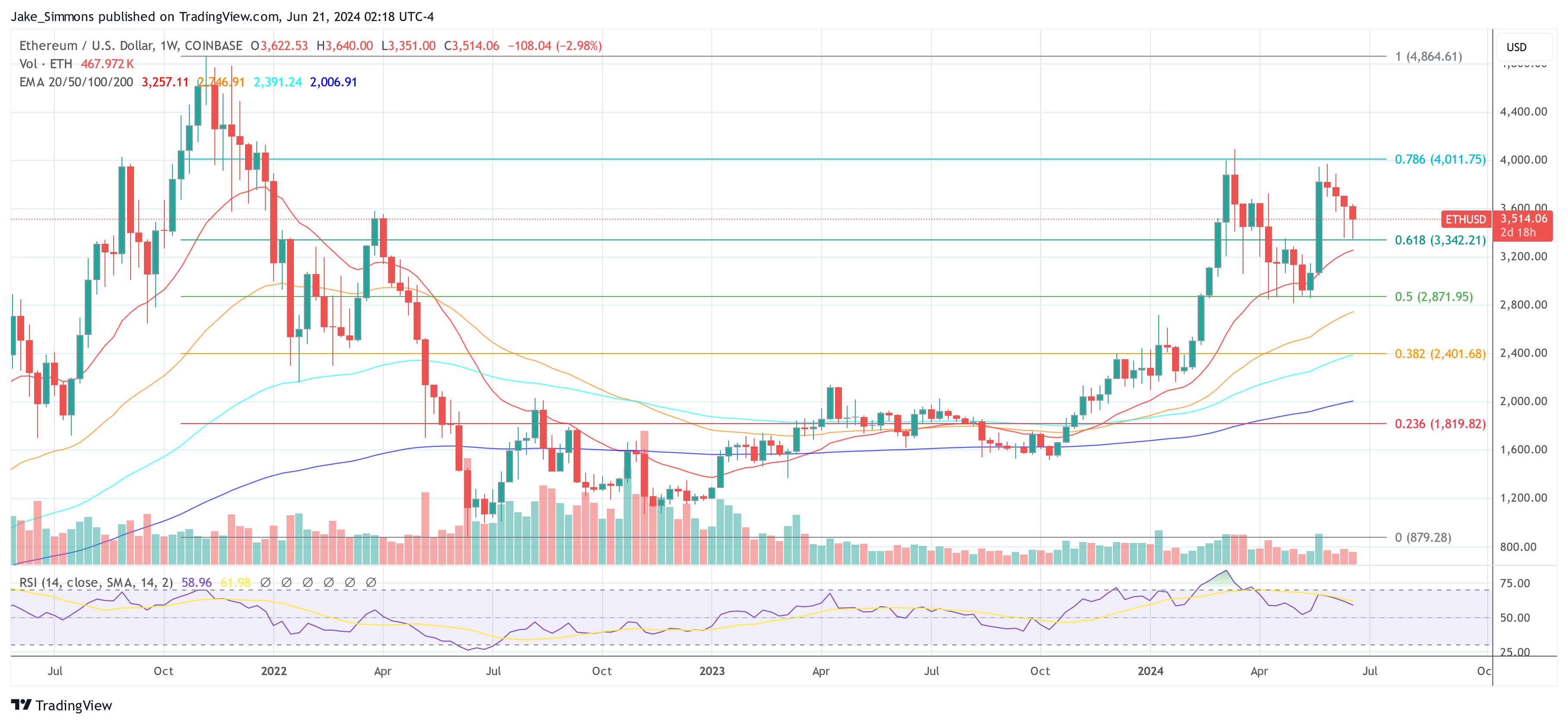In a recent one commentary shared on in addition to maintaining a position in Bitcoin (BTC). Hougan provided three compelling reasons for investors to embrace ETH, while also putting forward a critical stance for continuing to invest solely in BTC.
Ethereum vs. Bitcoin: 3 reasons pro-Ethereum
Hougan started by emphasizing the importance of diversification within crypto investments. He made an analogy to the early days of the Internet, pointing out how difficult it is to predict which technologies or companies will dominate in the long term. “It’s very difficult to predict the future with precision,” Hougan noted, referring to investors who bet on early Internet companies like AOL and Pets.com, which failed to deliver on their initial promise despite the Internet’s overall growth.
Related reading
Applying this lesson to crypto, Hougan recommended a diversified approach to hedge against similar uncertainties. Ethereum’s current market cap is around $420 billion, which is substantial, but still only about a third of Bitcoin’s market cap of $1.3 trillion. Given these numbers, Hougan suggested a standard starting allocation of 75% Bitcoin and 25% Ethereum for investors looking for broad market exposure.
Hougan’s second point addressed the functional differences between Bitcoin and Ethereum. He described Bitcoin primarily as “a new form of money,” highlighting design choices aimed at increasing its usefulness as a robust monetary system. “Every design choice the Bitcoin ecosystem makes is designed to make Bitcoin the best form of money that has ever existed,” he stated, highlighting Bitcoin’s focused development toward optimizing its use as a currency underlined.
Conversely, Ethereum is characterized by its role as a foundational technology for building new applications that leverage its programmable money capabilities. This includes everything from issuing stablecoins to enabling complex decentralized finance (DeFi) ecosystems.
“Ethereum’s primary function is to make money programmable,” Hougan explains. He argued that continued development within the Ethereum ecosystem provides broader exposure to the potential applications of blockchain technology, which is still in its infancy.
Related reading
The third argument for Ethereum focused on historical performance data. Hougan pointed out that wallets containing Ethereum and Bitcoin have historically shown better performance data, both in absolute terms and when adjusted for risk, over full crypto market cycles.
“My favorite thing about that table is that the +ETH portfolio has both higher returns and a lower maximum withdrawal,” he pointed out. This historical analysis suggests that Ethereum could offer better downside protection and higher potential returns, although Hougan cautioned that “past performance is no guarantee of future returns” and noted that in shorter, recent periods, a strategy based solely on Bitcoin based would have performed better.
Counterpoint: Why a Bitcoin-only Strategy is Preferred
Discussing the other side of the coin, Hougan discussed why many investors might prefer a Bitcoin-only strategy. This perspective is especially relevant for those concerned with macroeconomic issues such as the degradation of fiat currencies and inflation.
Hougan stated that Bitcoin’s dominant position and the community’s focus on becoming a new form of money make it likely that it will continue to lead this space. “It has a big edge, and size matters when it comes to money,” he stated, backing the idea that Bitcoin’s simplicity and targeted use case as digital gold could be more attractive for certain strategic investments.
“Money is a huge market. There is plenty of room for BTC to operate if it succeeds. […] My opinion, in a word: if you want to bet broadly on crypto and public blockchains, you need to own multiple crypto assets. If you specifically want to bet on a new form of digital money, buy Bitcoin,” concludes Hougan.
At the time of writing, ETH was trading at $3,514.06.

Featured image created with DALL·E, chart from TradingView.com

